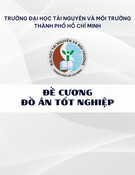
MINISTRY OF EDUCATION
AND TRAINING
VIETNAM ACADEMY
OF SCIENCE AND TECHNOLOGY
GRADUATE UNIVERSITY SCIENCE AND TECHNOLOGY
NGUYEN THUY VAN
FABRICATION AND INVESTIGATION OF
CHARACTERISTICS OF PHOTONIC MICROCAVITY 1D
FOR OPTICAL SENSORS
Chuyên ngành: Materials for Optics Optoelectronics and Photonics
Code: 62.44.01.27
SUMMARY OF SCIENCE MATERIALS DOCTORAL THESIS
Hanoi - 2018

9.
The thesis was completed at Key Laboratory for Electronic
Materials and Devices, Institute of Materials Science, Vietnam
Academy of Science and Technology.
Supervisors:
1. Assocc. Prof. Dr. Pham Van Hoi
2. Assocc. Prof. Dr. Bui Huy
Reviewer 1:
Reviewer 2:
Reviewer 3:
The dissertation will be defended at Graduate University of
Science and Technology, 18 Hoang Quoc Viet street, Hanoi.
Time:...........,............., 2018
The thesis could be found at:
- National Library of Vietnam
- Library of Graduate University of Science and Technology
- Library of Institute of Science Materials

LIST OF PUBLICATIONS
LIST OF PUBLICATIONS USED FOR THE THESIS
1. Huy Bui, Van Hoi Pham, Van Dai Pham, Thanh Binh Pham, Thi
Hong Cam Hoang, Thuy Chi Do and Thuy Van Nguyen,
Development of nano-porous silicon photonic sensors for
pesticide monitoring, Digest Journal of Nanomaterials and
Biostructures, volume 13, No.1, January – March 2018.
2. H. Bui, V. H. Pham, V. D. Pham, T. H. C. Hoang, T. B. Pham, T.
C. Do, Q. M. Ngo, and T. Van Nguyen, “Determination of low
solvent concentration by nano-porous silicon photonic sensors
using volatile organic compound method,” Environ. Technol., pp.
1–9, May 2018.
3. Van Hoi Pham, Huy Bui, Thuy Van Nguyen, The Anh Nguyen,
Thanh Son Pham, Van Dai Pham, Thi Cham Tran, Thu Trang
Hoang and Quang Minh Ngo, “Progress in the research and
development of photonic structure devices”, Adv. Nat. Sci.:
Nanosci. Nanotechnol. 7, 015003, 17pp, 2016.
4. Van Hoi Pham, Thuy Van Nguyen, The Anh Nguyen, Van Dai
Pham and Bui Huy, “Nano porous silicon microcavity sensor for
determination organic solvents and pesticide in water”, Adv. Nat.
Sci.: Nanosci. Nanotechnol. 5, 045003, 9pp, 2014.
5. Bui Huy, Thuy Van Nguyen, The Anh Nguyen, Thanh Binh
Pham, Quoc Trung Dang, Thuy Chi Do, Quang Minh Ngo,
Roberto Coisson, and Pham Van Hoi, “A Vapor Sensor Based on
a Porous Silicon Microcavity for the Determination of Solvent
Solution”, Jounal of the Optical Society of Korea, Vol. 18, No. 4,
pp. 301-306, 2014.
6. Van Hoi Pham, Huy Bui, Le Ha Hoang, Thuy Van Nguyen, The
Anh Nguyen, Thanh Son Pham, and Quang Minh Ngo, “Nano-
porous Silicon Microcavity Sensors for Determination of Organic
Fuel Mixtures”, Jounal of the Optical Society of Korea, Vol. 17,
No. 5, pp. 423-427, 2013.
7. Nguyen Thuy Van, Pham Van Dai, Pham Thanh Binh, Tran Thi
Cham, Do Thuy Chi, Pham Van Hoi and Bui Huy, “A micro-
photonic sensor based on resonant porous silicon structures for

liquid enviroment monitoring”, Proc. of Advances in optics
Photonics Spectroscopy & application, Ninh Binh city, Vietnam.
November 6 - 10, 2016, ISBN 978-604-913-578-1, pp. 471-475,
2017.
8. Phạm Văn Hội, Bùi Huy, Nguyễn Thúy Vân, Nguyễn Thế Anh,
“Thiết bị cảm biến quang tử và phương pháp để đo nồng độ dung
môi hữu cơ và chất bảo vệ thực vật trong môi trường nước” sáng
chế số: 16527, cấp theo quyết định số: 5424/QĐ-SHTT, ngày
24.01.2017.
LIST OF PUBLICATIONS RELATED TO THE THESIS
1. Pham Van Dai, Nguyen Thuy Van, Pham Thanh Binh, Bui Ngoc
Lien, Phung Thi Ha, Do Thuy Chi, Pham Van Hoi and Bui Huy,
“Vapor sensor based on porous silicon microcavity for
determination of methanol content in alcohol”, Proc. of Advances
in optics Photonics Spectroscopy & application, Ninh Binh city,
Vietnam. November 6 - 10, 2016, ISBN 978-604-913-578-1, pp.
404-408, 2017.
2. Nguyen Thuy Van, Nguyen The Anh, Pham Van Hai, Nguyen
Hai Binh, Tran Dai Lam, Bui Huy and Pham Van Hoi, “Optical
sensors for pesticides determaination in water using nano scale
porous silicon microcavity ”, Proc. of Advances in Optics,
Photonics, Spectrscopy & Applications VIII, ISSN 1859-4271,
pp.603-608,2015.
3. Thuy Van Nguyen, Huy Bui, The Anh Nguyen, Hai Binh
Nguyen, Dai Lam Tran, Roberto Coisson and Van Hoi Pham,
“An improved nano porous silicon microcavity sensor for
monitoring atrazine in water”, Proc. of The 7th International
Workshop on Advanced Materials Science and Nanotechnology
(IWAMSN2014)- November 02-06, 2014- Ha Long City,
Vietnam, ISBN: 978-604-913-301-5, pp.173-179, 2015.

1
INTRODUCTION
1. The urgency of the thesis
In recent years, photonic sensors have generated an increasing
interest because of their already well-known advantages, as immunity
to electromagnetic interferences, high sensitivity, no impact noise
and working in harsh environment. Photonic sensors are generally
classified according to the physical principle including endogenous
sensors and exogenous sensors. Exogenous sensors often use the
physical principle that light is altered in intensity of spread; reflex;
scattering; refraction; or wavelength conversion due to interaction
with the external environment. These sensors are relative easiness of
fabrication, but the processing of light signals varies due to the
complexity of the external environment requiring high sensitivity.
The endogenous photonic sensor uses the physical principle that the
optical properties of sensor structure is changed when interacting
with the environment. Therefore, they have very high sensitivity,
easiness of signal processing and compact device size. However, the
disadvantage of endogenous photonic sensor is the ability to reuses
and selectivity. Endogenous photonic sensors are being promoted in
research because of their extremely high sensitivity which can be
combined with many specializations in chemistry and biology. At
present, the sensitivity and selectivity of endogenous photonic
sensors can be enhanced and have had some very good results.
In general, scientists and technologists have proposed the standard
approach of quantitative analysis of components with extremely
small concentrations by using gas chromatography or liquid
chromatography (GC / MS, LC / MS or HPLC / MS-MS) [1]-[4],

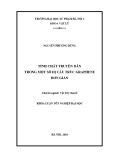

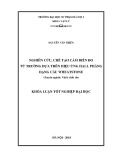
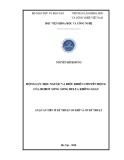

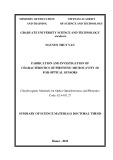
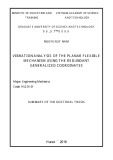
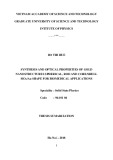
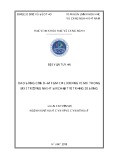
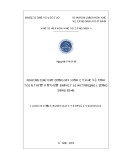

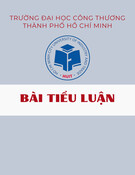
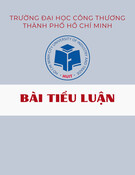
![Ô nhiễm môi trường không khí: Bài tiểu luận [Nổi bật/Chi tiết/Phân tích]](https://cdn.tailieu.vn/images/document/thumbnail/2025/20251011/kimphuong1001/135x160/76241760173495.jpg)







![Ứng dụng kỹ thuật trao đổi ion trong điện phân: Bài tiểu luận [chuẩn nhất]](https://cdn.tailieu.vn/images/document/thumbnail/2025/20250829/sonphamxuan1808/135x160/97341756442892.jpg)
